-
1BOM, Tools and Skills Needed
You will need:
Necessary tools:
- soldering iron
- solder wire
- sandpaper
- flat pliers
- cutting pliers
- fine tweezers
Optional (but handy) tools:
- Fume extractor
- multi-meter
- magnificent glass
Skills:
- basic soldering skills
Bill of materials:
Components Supplier Wholesale price ($) Price per PCB ($) 11x 0805 SMD blinking leds Aliexpress 15,79 0,29 1x CR1220 battery 0,75 0,15 1x battery holder 6,58 0,07 1x toggle switch 2,62 0,03 2x 2 pins header 0,51 0,01 1x PCB 4,90 0,12 I've chosen cheap components to keep the BOM below the symbolic price of $1 per Christmas tree PCB. The total price for one PCB Christmas tree with all the electronic components soldered is estimated to $0,67.
-
2PCB Design
I designed my PCB Christmas tree using Autodesk EAGLE. EAGLE is an electronic design automation (EDA) software enabling schematic diagrams design, component placement and PCB routing.
![]()
I started the design by creating the schematic of the electronic circuit. It consists in 11 flashing LEDs in parallel, powered by a 3 V button cell battery. A switch can open or close the circuit. Finally, an optional filtering capacitor of 10 µF is placed between the battery voltage and the ground.
I made the choice to not include a resistor in series with the LEDs as 3 V is very close to the forward voltage of many LEDs colors:
![LEDs colors]()
The schematic and the PCB are divided in three parts:
- the main board: it has a Christmas tree shape and includes the battery holder, the switch, 3 LEDs on the top face and 2 LEDs on the bottom face. Two 2-pins pinhead connectors allow to connect and power the two fins, one on the top face and the other on the bottom face.
- the top fin: it has a shape of half a Christmas tree with a notch for the battery holder and includes 1 LED on the top face and 2 LEDs on the bottom face. One 2-pins pinhead connector footprint allows the fin to be connected and powered to the main board.
- the bottom fin: it has a shape of half a Christmas tree and includes 2 LEDs on the top face and 1 LED on the bottom face. A 2-pins pinhead connector footprint allows the fin to be connected and powered to the main board.
![]()
I decided to opt for a reduced size of 48 * 48 mm per fir by drawing the outline of the board with the 20th layer "Dimension".
I drew the shape of the fir tree using the 46th layer "Milling" with a width of 3 mm: this line is interpreted as a milling area for the manufacturer, and separate the fir from its fins.
Once the outline of the circuit clearly defined, I placed the largest components such as the battery holder and the switch, then the LEDs so that their distribution is pleasant.
I added another milling area on one fin so the battery holder can fits and a hole on the top the tree to be able to hang it anywhere (in a real Christmas tree for exemple).
Then, I routed all the components using Top and Bottom layers : the battery voltage is distributed to the LEDs with 0,5 mm width traces and an overall ground plane.
Finally, I designed two breakaway tabs and placed them between the main fir and its fins on the 3 mm milling trace in order to keep my board as a single design and allow PCB panelization (see next step for more details).
All Eagle files can be found on my github
-
3PCB Panelization
Most PCB manufacturers now offer a single price of $5 for 10 PCBs up to 100*100 mm in size. The price remains the same whether the circuit is 50*50 mm or 100*100 mm. Cost optimization is then possible by maximizing the number of circuits on this maximum area. PCB panelization consists of creating a single PCB from several small ones in order to reduce cost and waste.
Most PCB manufacturers do not charge extra cost for identical design panelization. It means you can manage to fit several small PCBs into one for free, but it must remains the same design for all. More informations can be found on the PCB manufacturer Seeedstudio's website.
![Panelized PCB]()
PCB panelization can comes in 2 ways:
- V-groove panelization method: it consists by cutting 1/3 the thickness of the board from the top and 1/3 the thickness from the bottom, parallel with the top cut, with a 30- to 45-degree circular cutting blade. This can be done only along straight lines all the way through the PCB array.
- Breakaway-tab panelization method: it consists by leaving perforated tabs routing space between PCBs. Spacing between two PCBs is around 2,5 mm as it is the standard router size in most fabrication houses and requires only a single pass of the router bit to mill the board. N-Holes perforation patterns are standard for breakaway tabs and are designed to be easily removed without leaving unwanted side board protrusions.
More informations about PCB panelization design can be found in the very well documented article written by Jack Lucas for www.ElectronicDesign.com.
In order to reduce the cost of my project, I've decided to panelize four of my PCB Christmas trees into one single board. First, I had to link the two fins of the PCB Christmas tree to the main board. I designed two breakaway tabs with a 3-holes perforation pattern which link each fin to the main Christmas tree board. The breakaway tabs are made of 2*3 holes with a diameter of 0,9 mm.
![]()
Once the design of one PCB Christmas tree finished, I duplicated it four times and dispatched each of them side by side to fill the 100*100 mm area imposed by the manufacturer. All designs are spaced by 3mm and connected with breakaway tabs with a 3-holes perforation pattern.
![]()
The final PCB has a size of 100*100 mm and contains 4 Christmas tree PCBs. The cost of a PCB unit is so divided by 4 !
-
4Soldering the PCB
When all components are gathered the soldering of the PCB can start !
![]()
- Soldering the LEDs -
It is best to start with LEDs soldering as they are the smallest components. Soldering them last would make the task potentially more difficult as larger components could interfere with their placement. LEDs are polarized components and it is important to identify on the PCB how they are supposed to be soldered. The LEDs footprint on the PCB is always the same: the pad connected to the ground plane is the mass (cathode) and the pad connected to a track is the supply voltage (anode). A green arrow under the CMS LED indicates the flow direction of the current and therefore its polarity.
![]()
Testing a LED with a multimeter in "diode tester" configuration can help determine its polarity and color.
![]()
To solder the LEDs, I first began by placing a small amount of solder on one of the LED pad. I then approached the LED with fine tweezers while keeping the solder molten with my soldering iron. Once the led correctly placed, I removed my soldering iron to solidify the solder. The second solder can then be made without the need to hold the LED with the tweezers. This process is repeated for the 10 LEDs remaining.
![]()
![]()
- Soldering the battery holder -
The battery holder holds the button cell against the PCB to create the electrical connection. To hold the battery firmly, I deposited a small layer of tin on the battery holder pad. The connector is then placed and soldered.
![]()
![]()
- Soldering the switch -
Finally, the switch is soldered to the same side as the battery connector. The toggle protrudes from the PCB for easy operation.
![]()
-
5Assembling the PCB
Once all the components soldered, it's time to assemble the Christmas tree.
- Separating the boards -
I started to break the board with flat pliers to separate the two fins from the main board. I used cutting pliers to remove any big edge remaining which could possibly hurt. Then, I used sandpaper to smooth the sides of the Christmas tree and finally have three clean boards : the main tree and his two fins.
![]()
![]()
- Connecting the boards -
One fin is attached to the main board by soldering a 2 pins pinhead connector between them. The pinhead connector has two uses here: hold the wing to the main board and bring the voltage and mass to the LEDs of the fin.
![]()
I cut 2* 2 pins pinhead connectors from a large pinhead connector strip and cleaned the plastic edges with sandpaper. Then, I soldered them head to tail on the main board like shown on the pictures, one on the top face and the other on the bottom face.
![]()
I soldered the two fins to the connectors being careful to properly align them and placing the fin with a notch on the battery connector side.
![]()
The PCB Christmas tree is now finally assembled !
![]()
- Turning on the circuit -
The PCB is powered by a CR1220 lithium battery of 3V. Once the button cell inserted in the battery holder down the board and the switch closed, all the LEDs start flashing like magic !
![]()
![]()
The button cell used in this project has an average capacity of 40 mAh, which means for exemple that it can deliver up to 40 mA during 1 hour, or 20 mA during 2 hours. The current consumption of the PCB Christmas tree is around 80 mA, and depends on the colors of the LEDs chosen : white, blue and purple LEDs draw more current than red, orange, and yellow LEDs.
By experience, I recommend you to use red, orange, yellow and green LEDs, as they will spare the battery life while providing nice colors in the Christmas spirit theme :) With these colors in equal proportions, my PCB Christmas trees glow during 1 hour until the green LEDs start to fade.
-
6Conclusion
I had a fun time designing these small PCB Christmas trees and I learned a lot about PCB manufacturing and PCB panelization.
Thanks to the low-cost design of the project, the soldering workshop has been offered for free to those who wanted to try it. These PCBs have been very successful in my club and many new members have soldered their first chip based on SMD components. I was more than happy to hear that some of my creations had decorated the Christmas trees of my friends.
Today, I am proud to be able to transmit through this workshop and this tutorial the knowledge I gained during this project. I hope you liked it and I wish you the best for the year coming :)
![]()
$1 PCB Christmas Tree
A Christmas tree made on printed circuit board with embedded 0805 SMD flashing LEDs
 Loann Boudin
Loann Boudin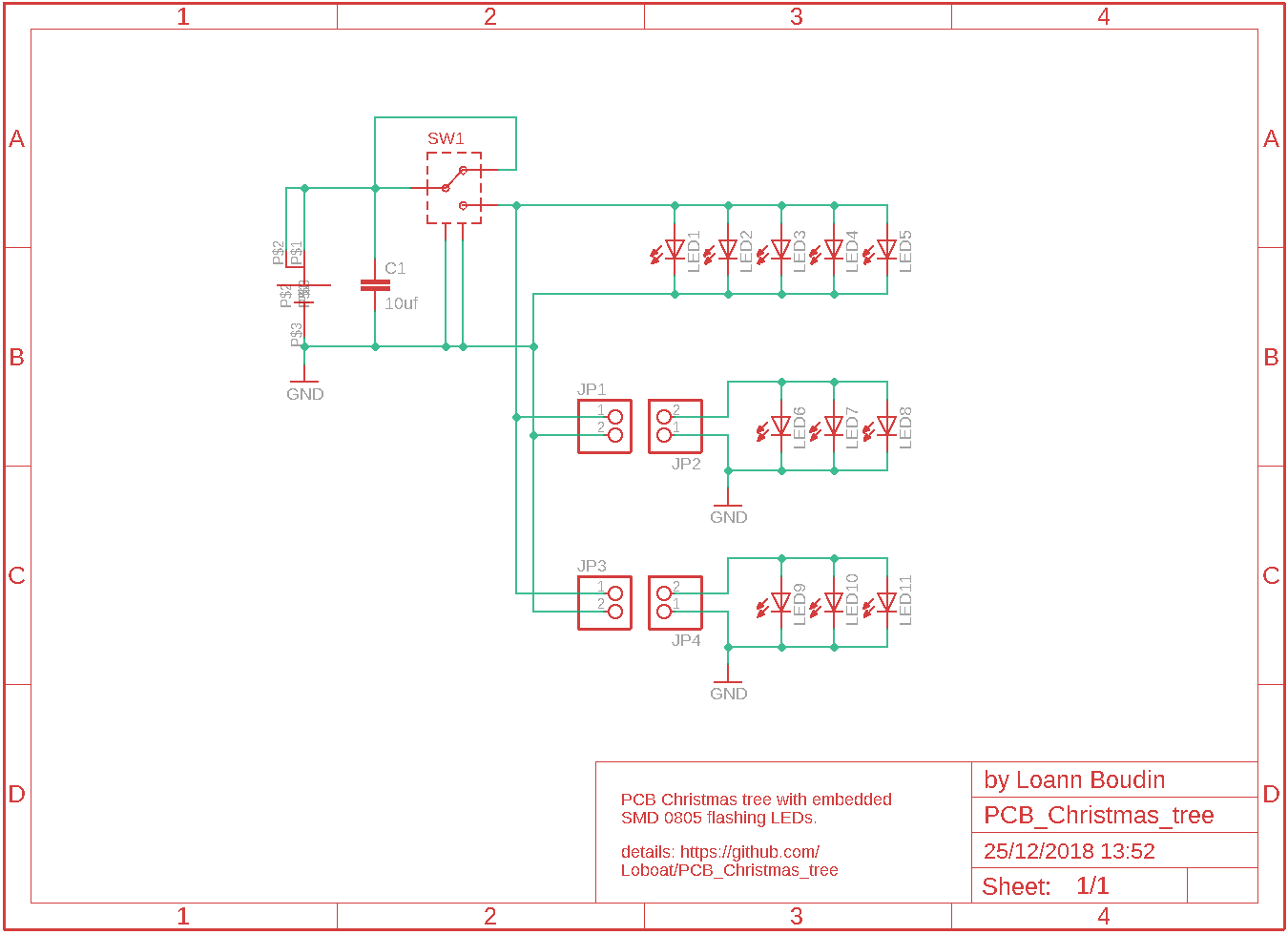

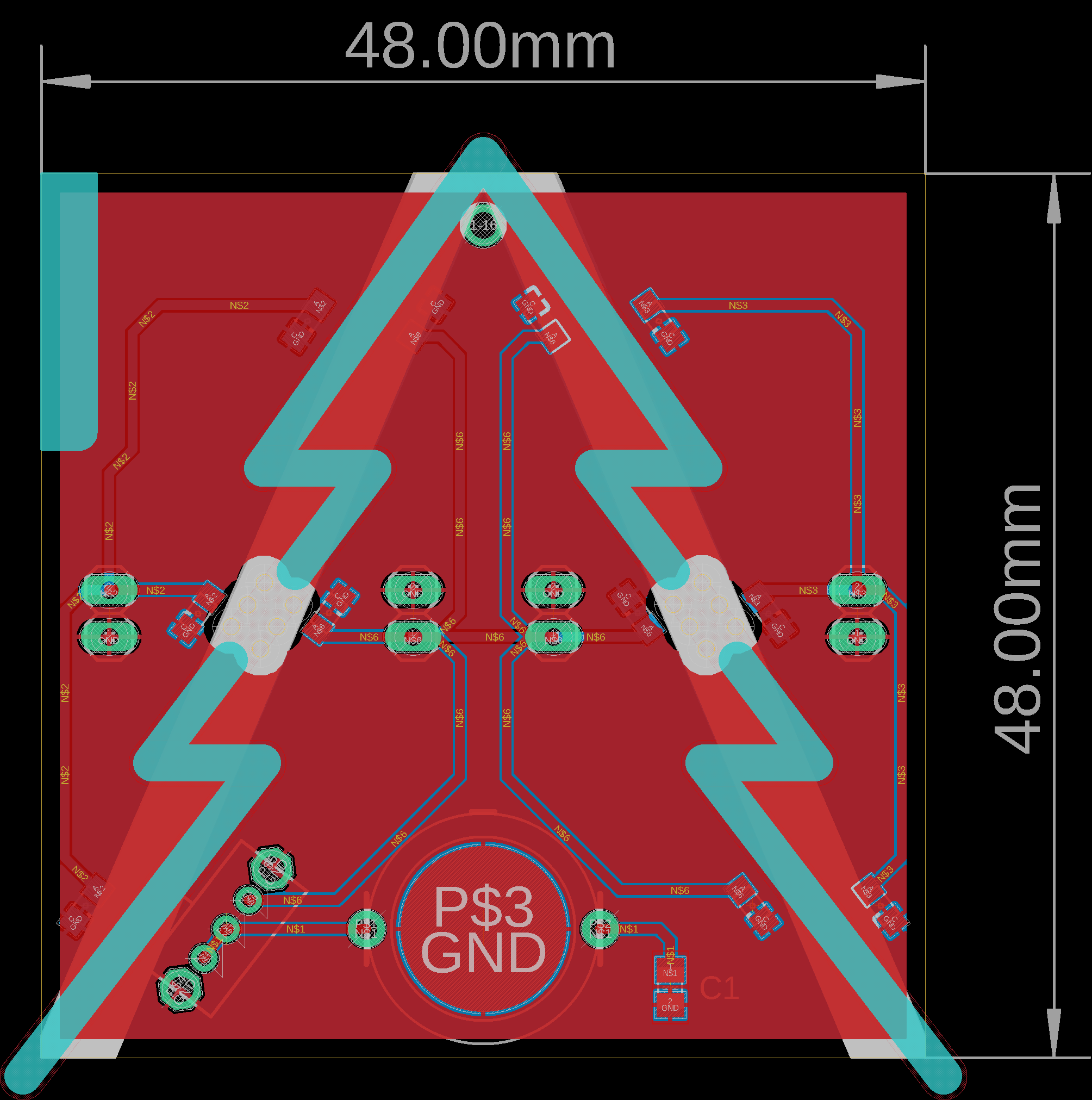



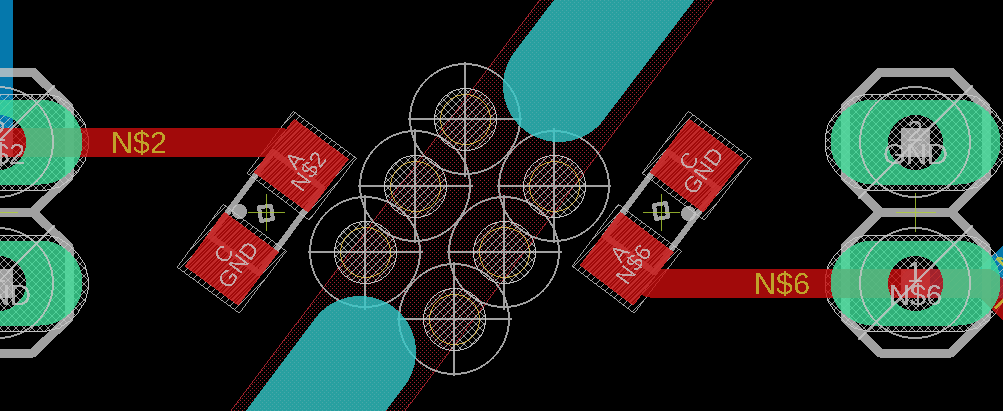

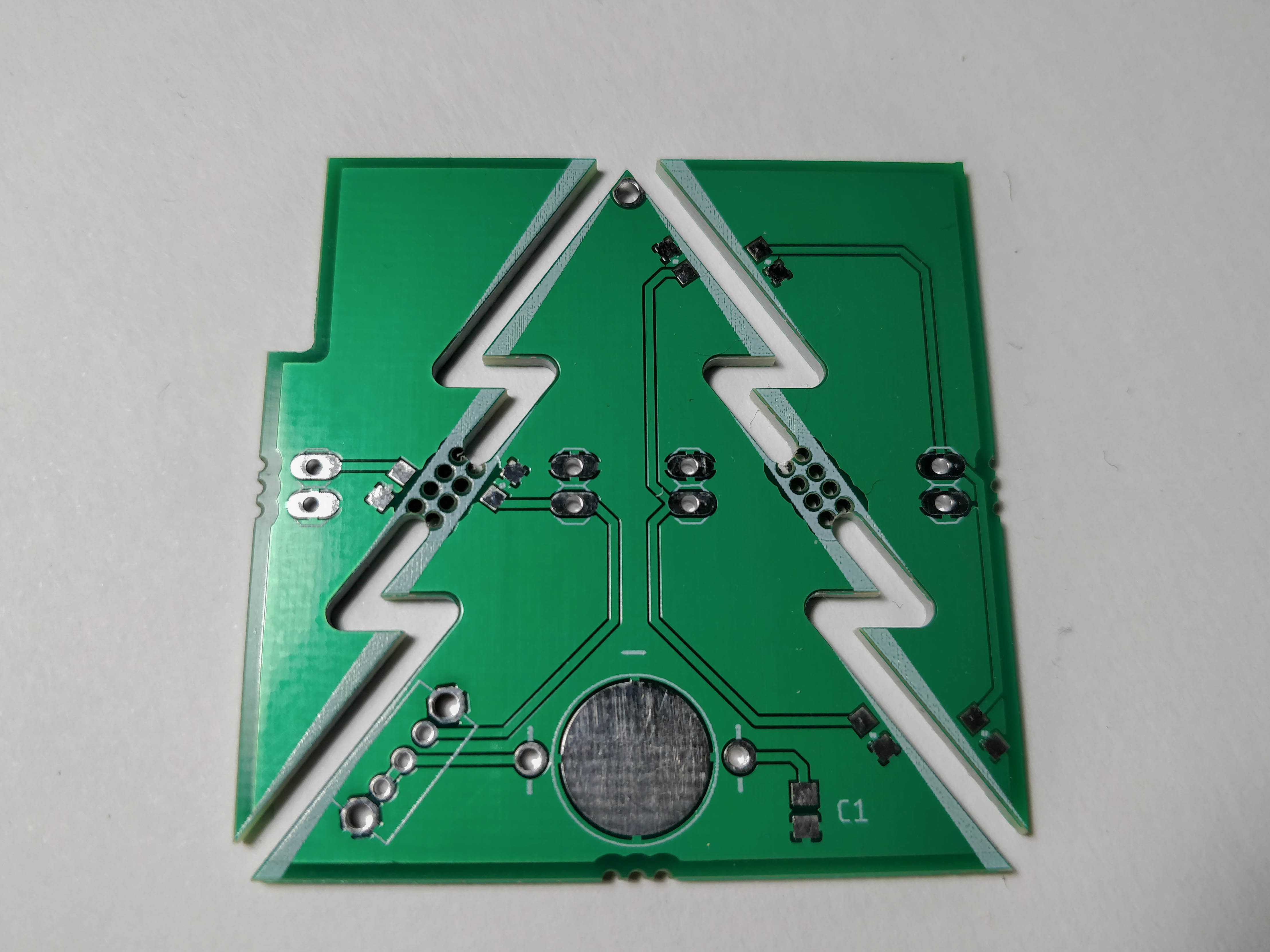

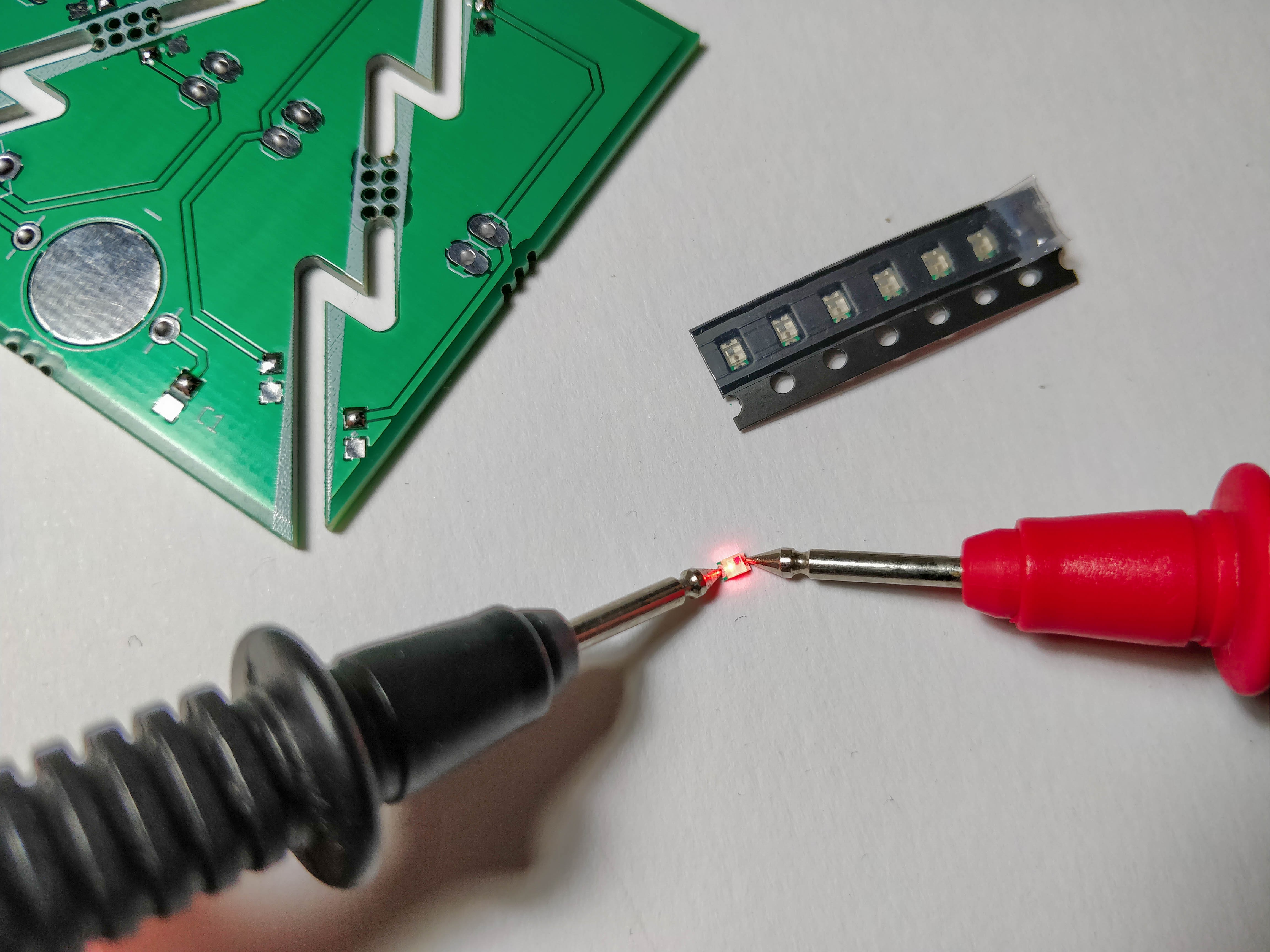
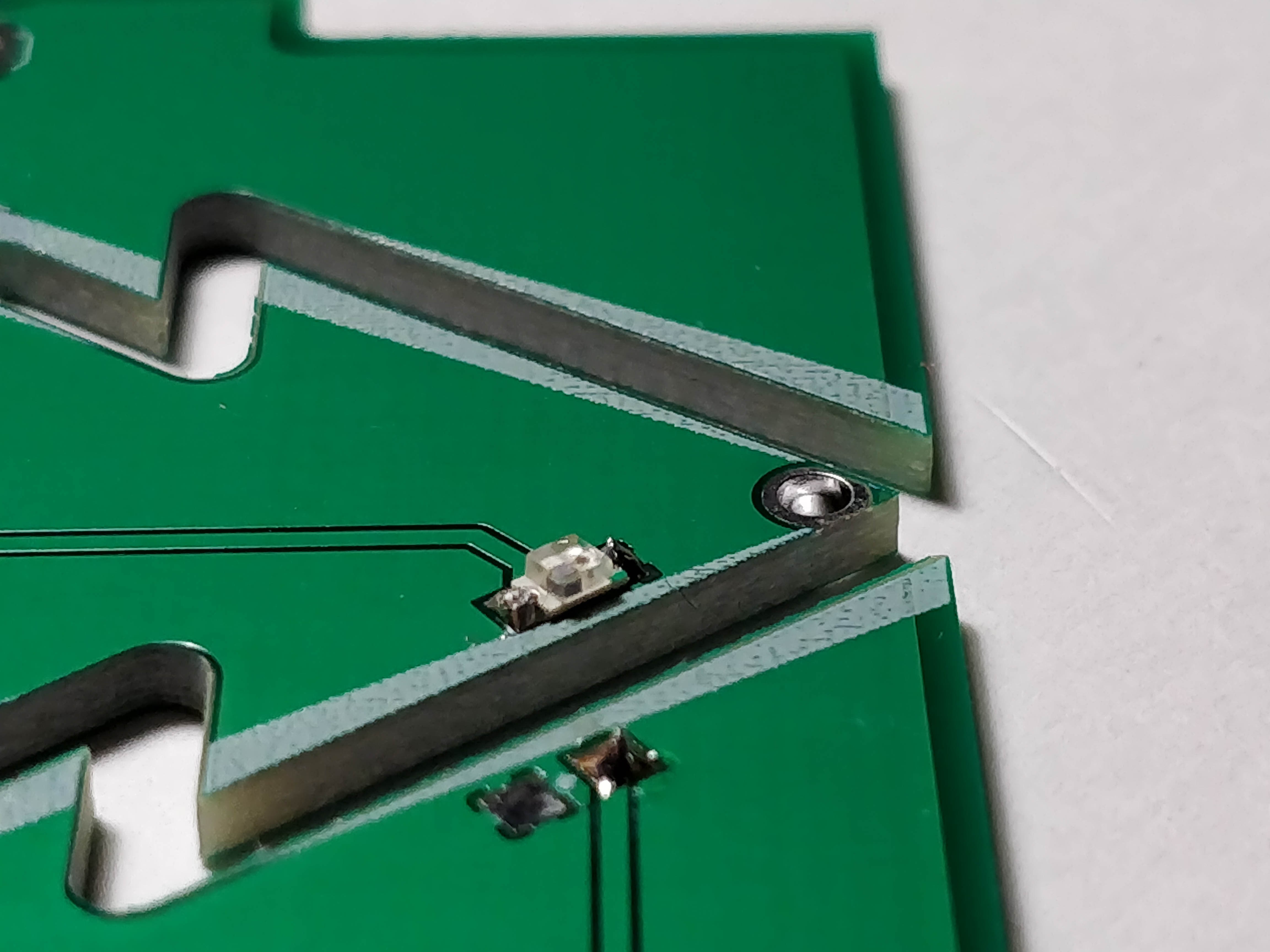

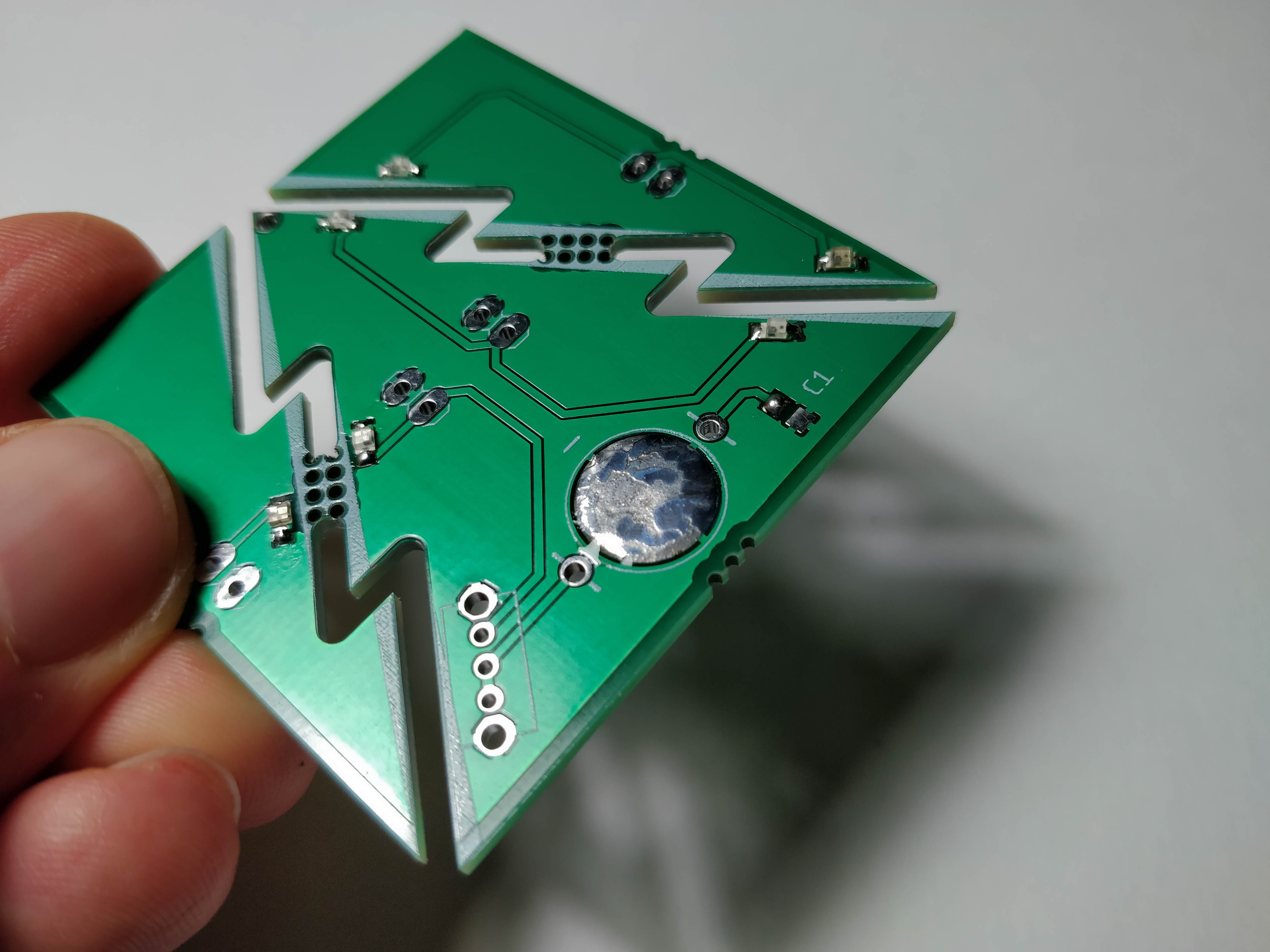
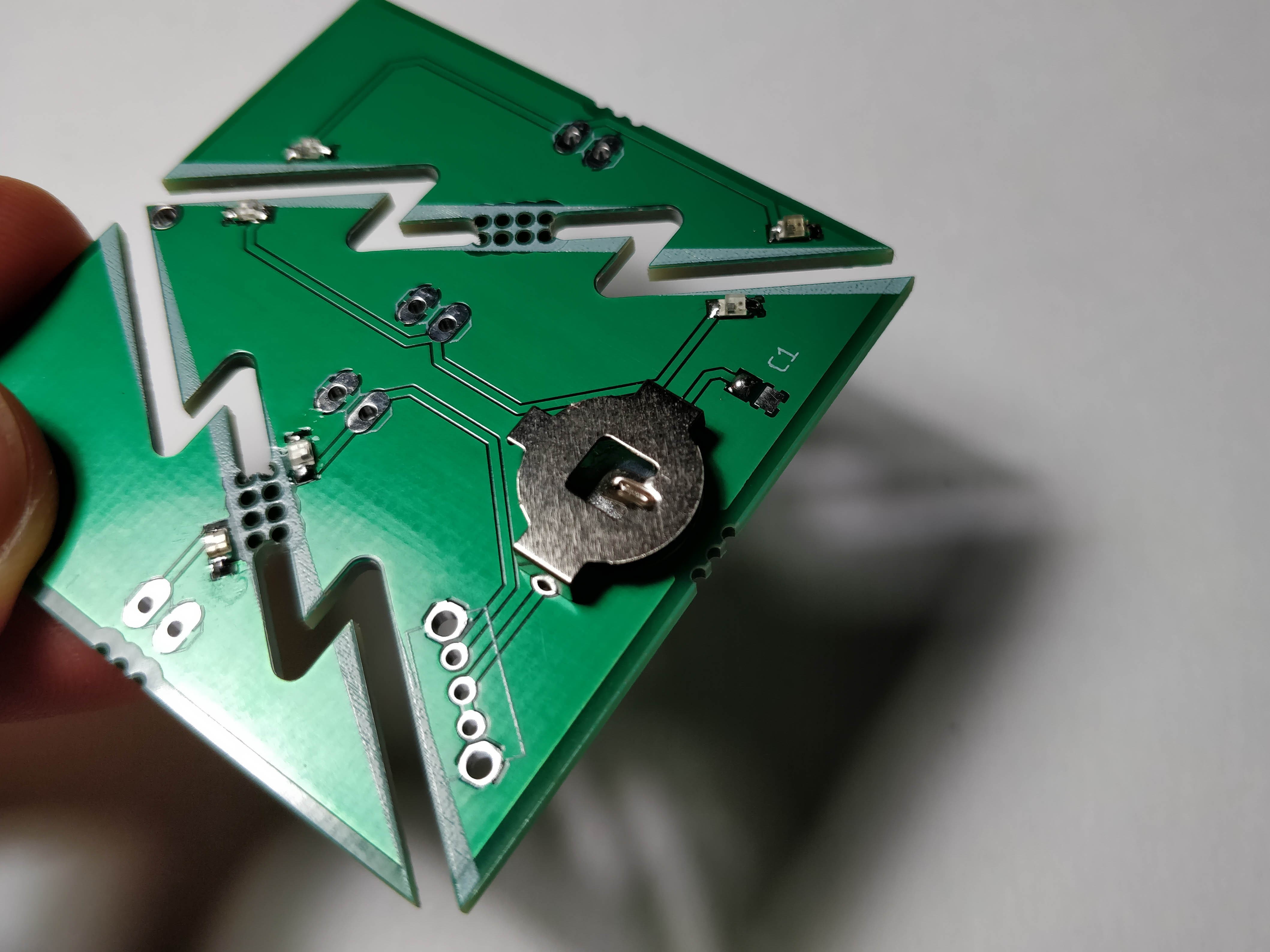
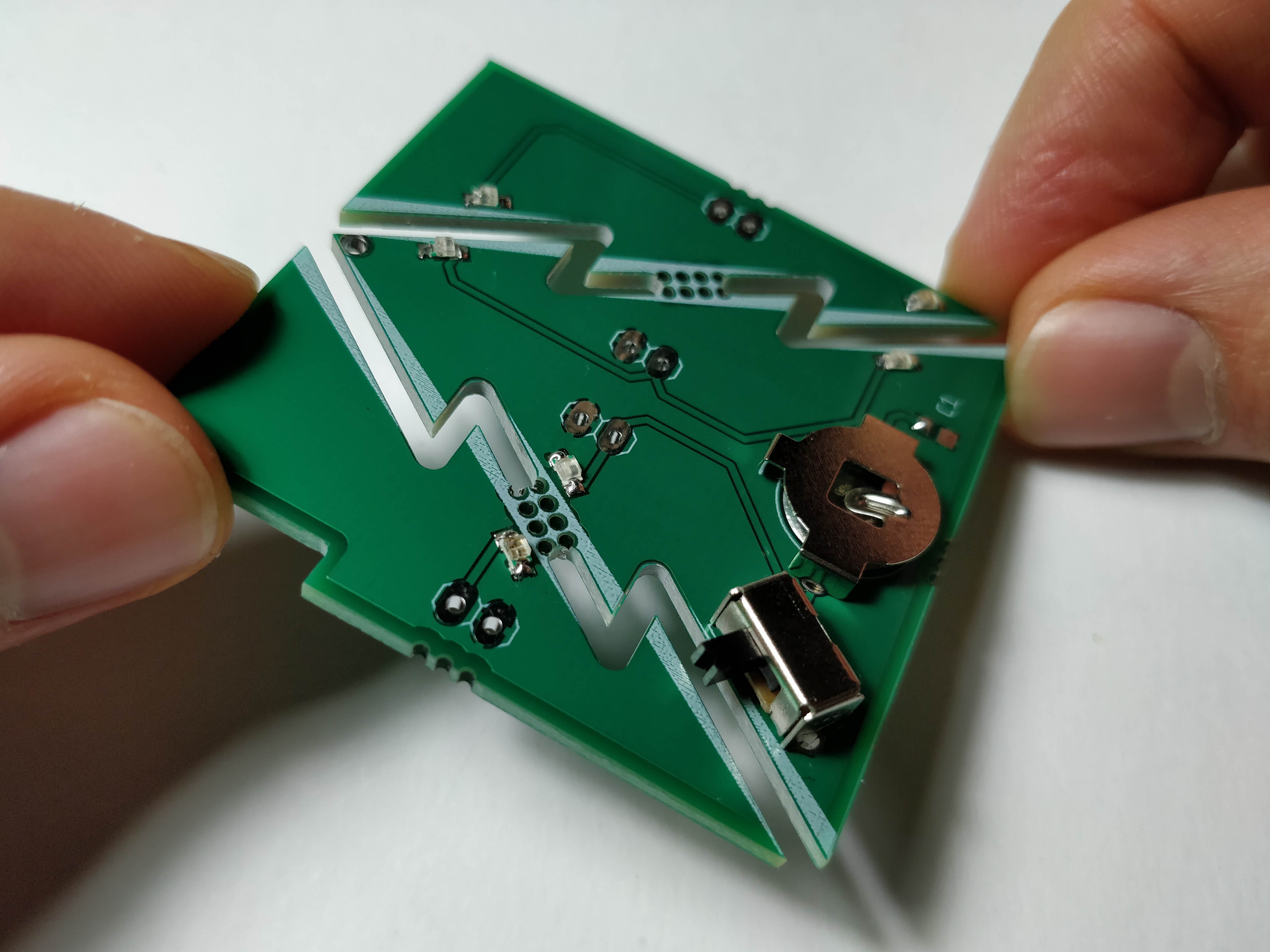
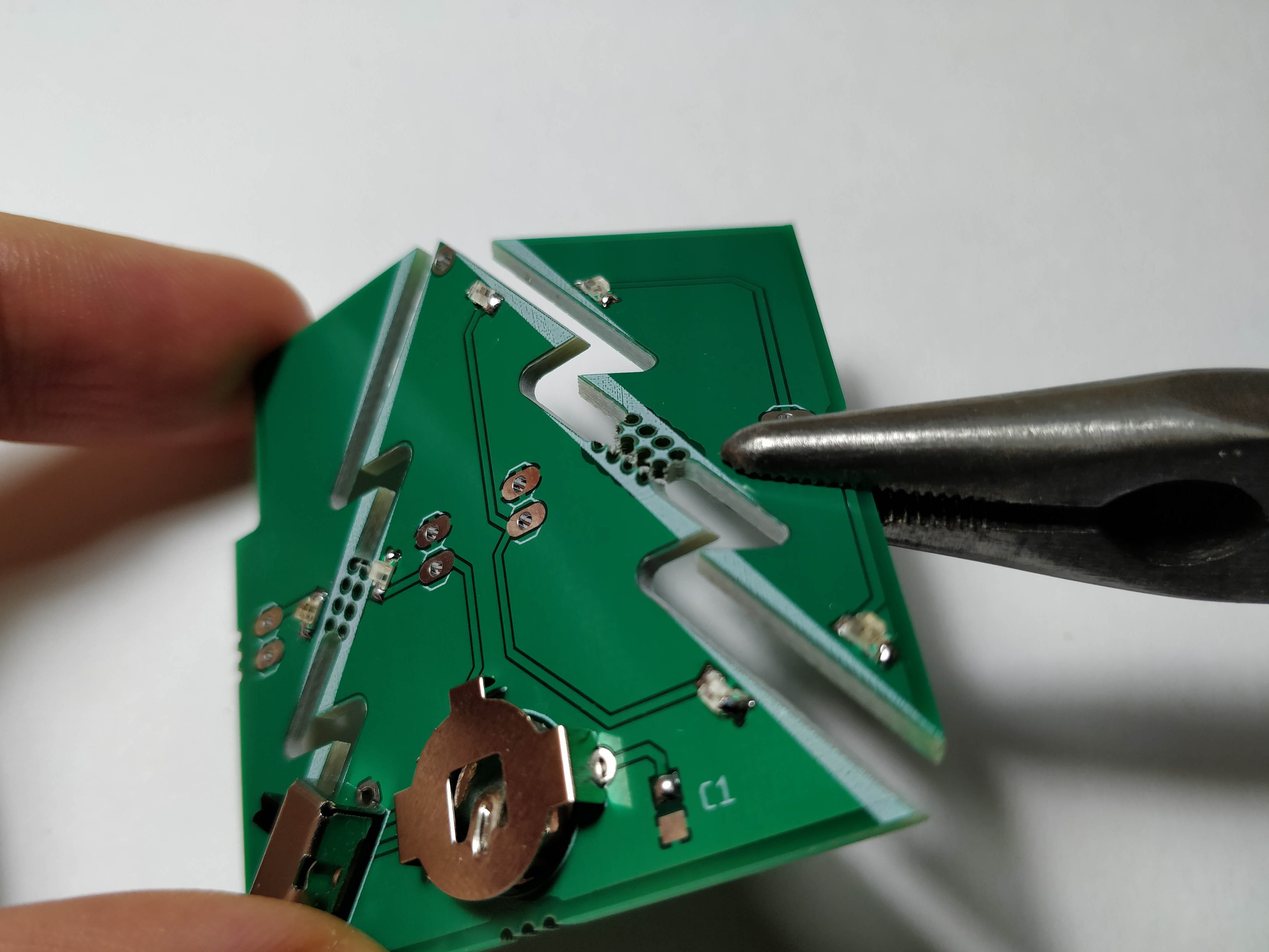
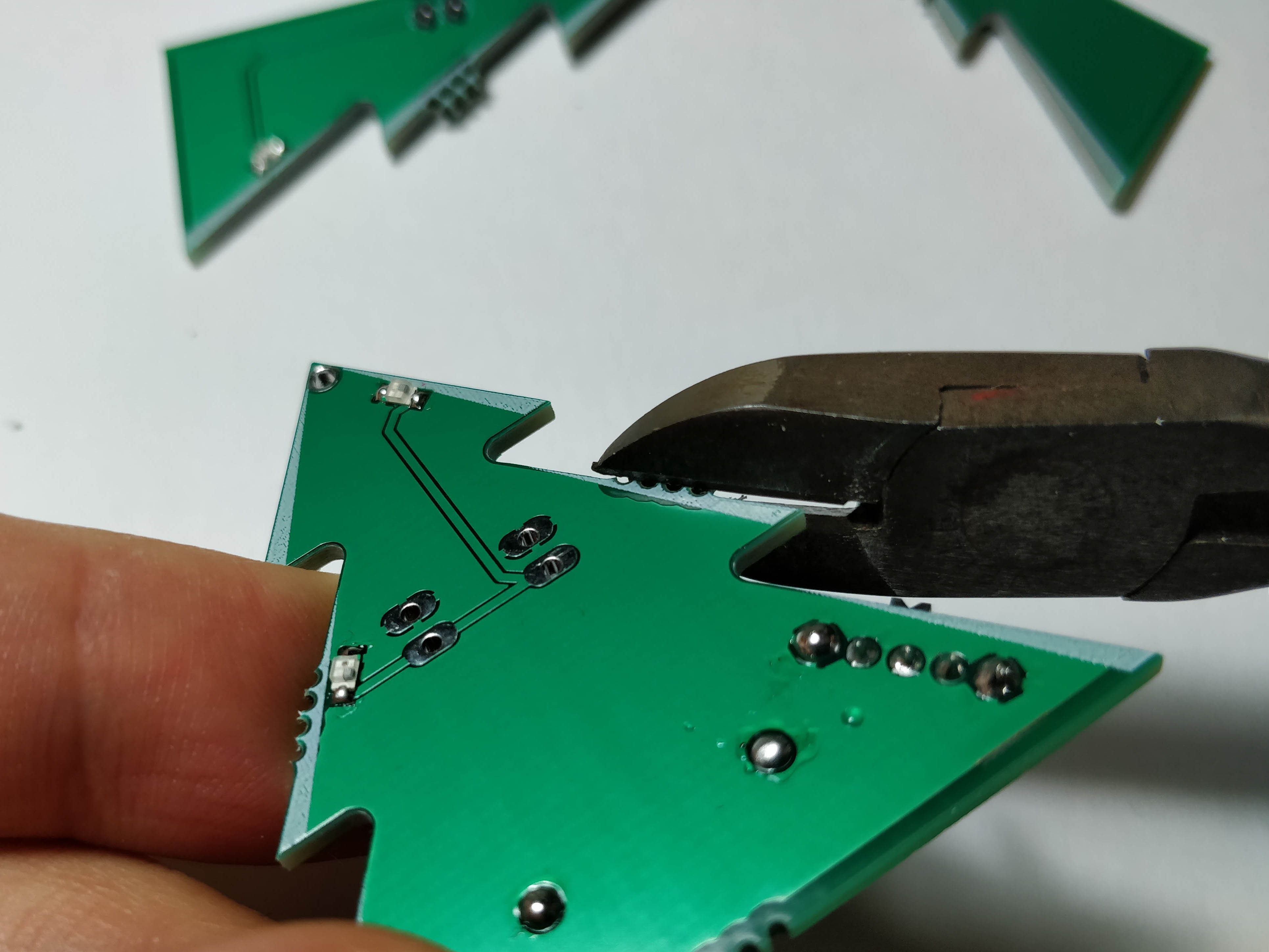
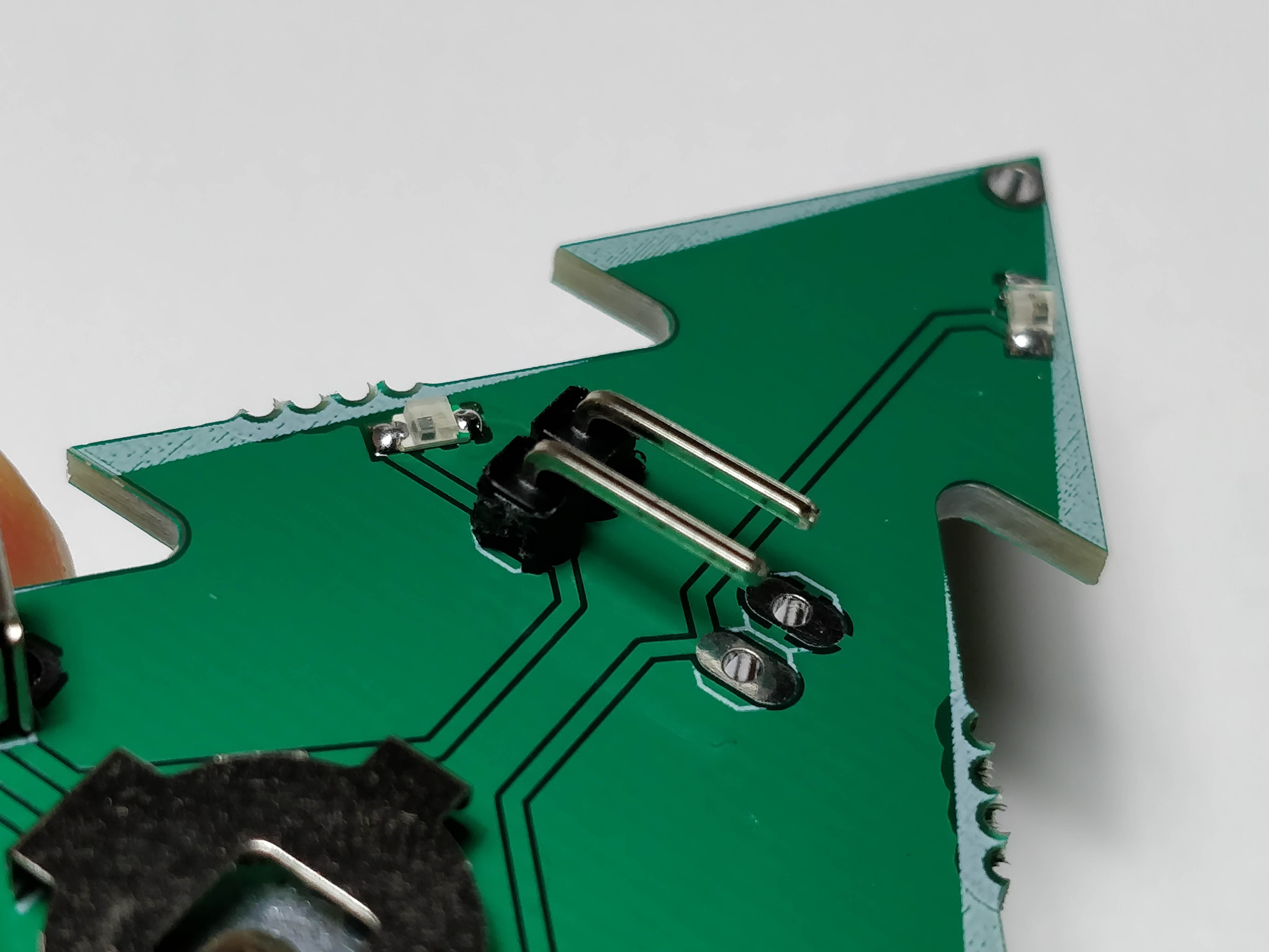
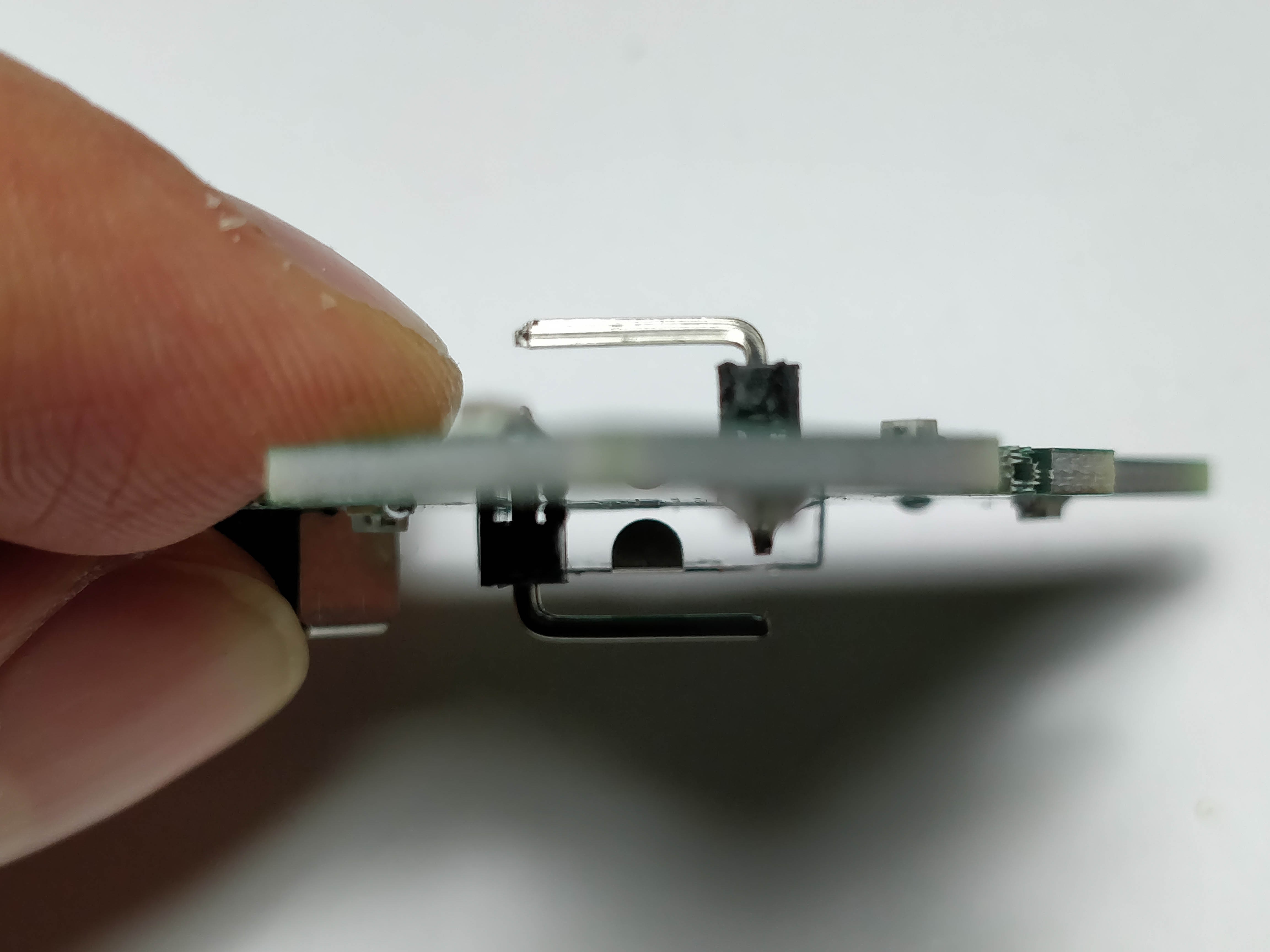

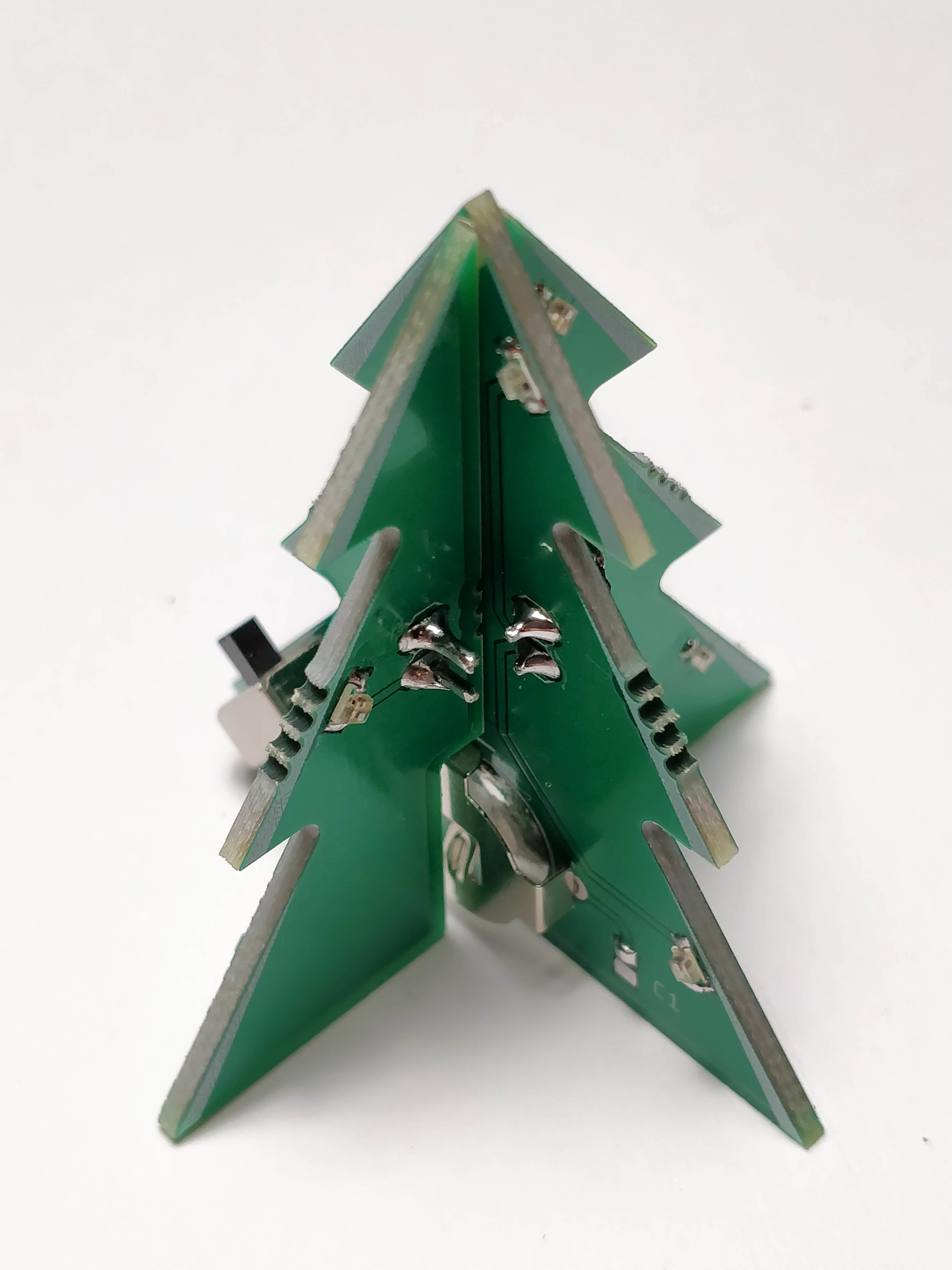
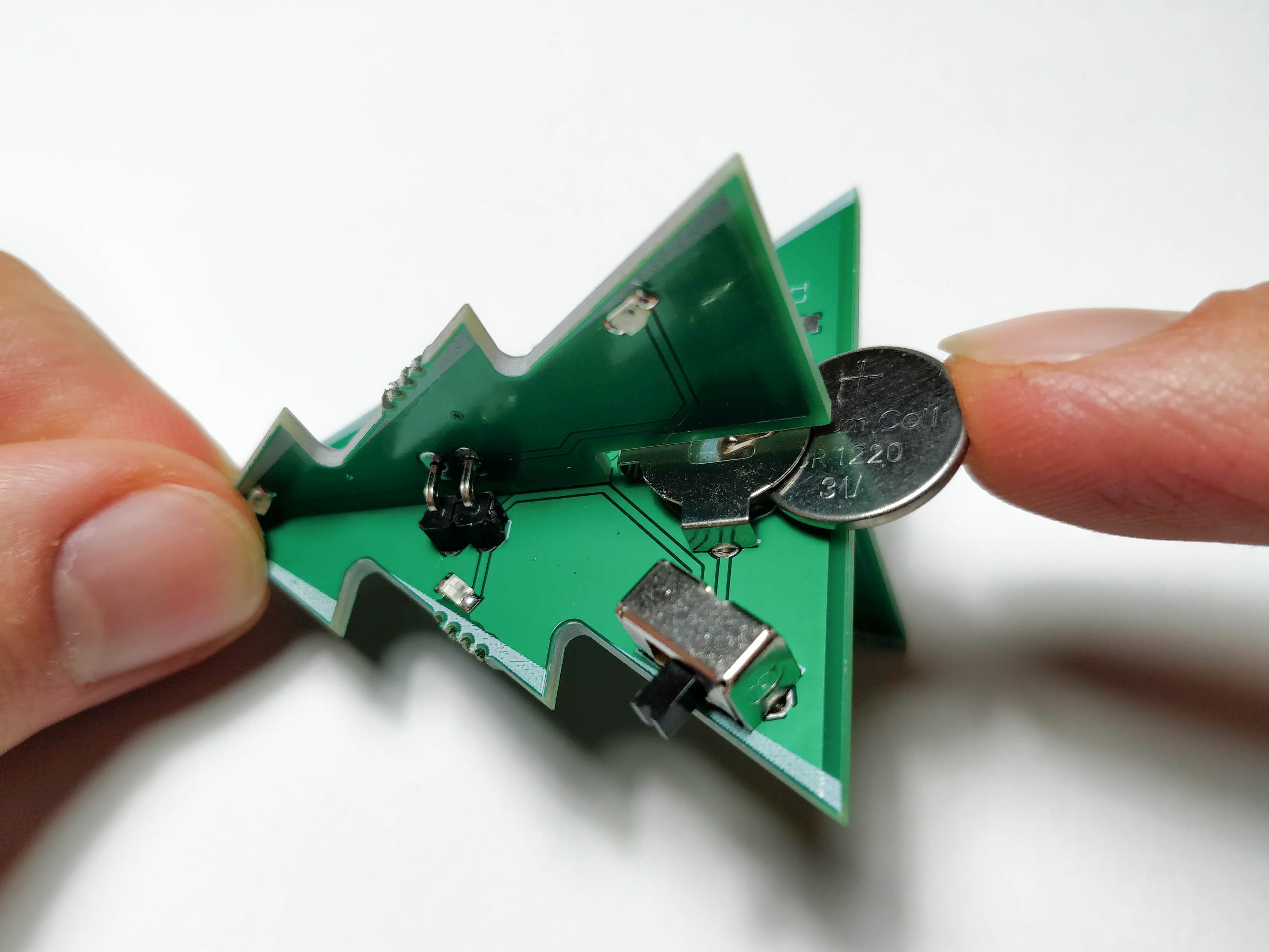


Discussions
Become a Hackaday.io Member
Create an account to leave a comment. Already have an account? Log In.